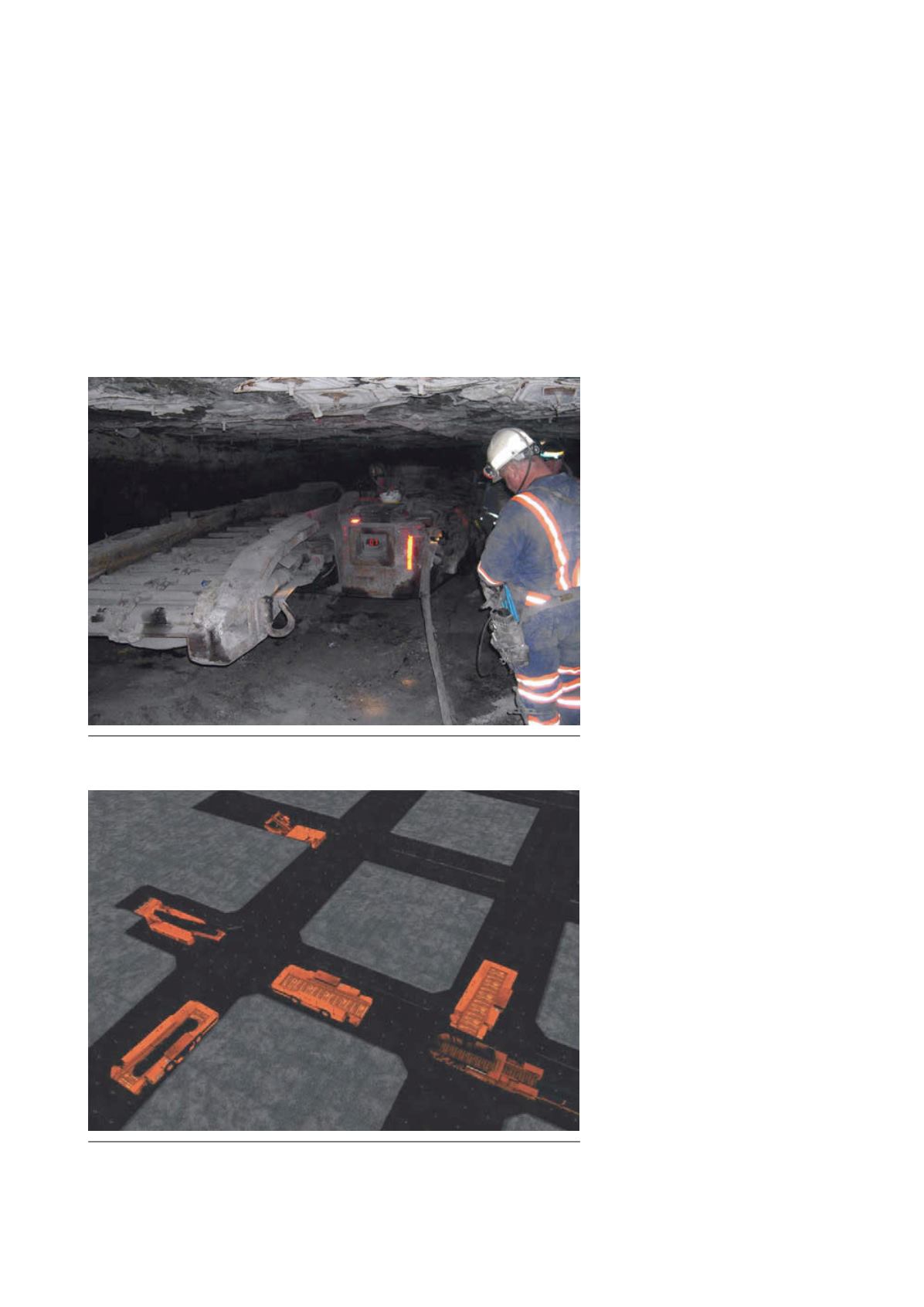
applications – but the scenarios and
problems involved differ greatly
underground. Low headroom reducing
the possible field of view, as well as low
visibility and frequent blind corners, can
make awareness of other objects,
particularly pedestrians, very tricky,
despite the use of vehicle lighting. In fact,
the glare of bright lights can obscure
pedestrians and other objects, even when
high-visibility clothing is worn. Therefore
another method of visibility substitute is
highly desirable.
The tasks of collision avoidance can be
split into two parts: (a) the protection of
pedestrians in dangerous positions in
proximity to mobile plant and (b) making
plant operators aware of possible
collisions requiring avoidance actions.
Proximity detection systems may initiate
automatic avoidance (actual stoppage in
a safe manner), as long as the operator
does not override the system.
Although some proximity systems
have been available for around a decade,
it is only during the last five years that
they have come into prominence on the
back of pressure frommineworkers'
unions, government agencies and the
availability of practical systems
developed by experienced mining
industry suppliers. The areas of main
growth have been Australia,
South Africa and the US, with significant
technology also emanating from
Germany.
A leader in the development of
proximity detection and collision
avoidance technology has been the US
National Institute for Occupational Safety
&Health (NIOSH), part of the Centers for
Disease Control and Prevention (CDC).
This research and development
organisation is separate from the US
Mine Safety and HealthAdministration
(MSHA), which is responsible for
approving commercially available
systems in addition to enforcement of
mining health and safety legislation.
The introduction of a final regulation
proposal by MSHAhas been a major
step in the introduction of approved
proximity detection systems in US coal
mines for mobile equipment. Previously,
no underground equipment was
required to have proximity systems. The
new rule took effect a year ago
(16 March 2015) and is being phased in
over 18 to 36 months. The regulation
only applies to continuous miners at
present. The aim is to protect miners
from being crushed, injured or pinned
against other equipment or walls by
moving plant. Not only are there
requirements for alarm(s) in such
circumstances, but also before there is
any contact between a continuous
mining machine and a person, the
proximity system on the machine
automatically stops its motion safely. In
autumn 2015, MSHApublished a
proposed rule, which would require
proximity systems for other
underground mobile equipment. MSHA
estimates that, based on accidents
involving coal hauling machines and
scoops between 2010 and 2014, 41
injurious accidents, including nine
fatalities, may have been prevented by
the use of proximity detection systems.
Of course, regulations tend not to be
international, even if smaller national
industries may follow the path of more
developed national mining industries.
This frame from 5DT’s underground coal mine visualiser, MineVIZ UG Coal,
demonstrates the potential for collision between mobile plant in a busy room-and-pillar
operation.
The proximity of high-powered mobile equipment and miners require additional
measures for safety (Photo from the Thoughtful Miner website [US]).
40
|
World Coal
|
March 2016


